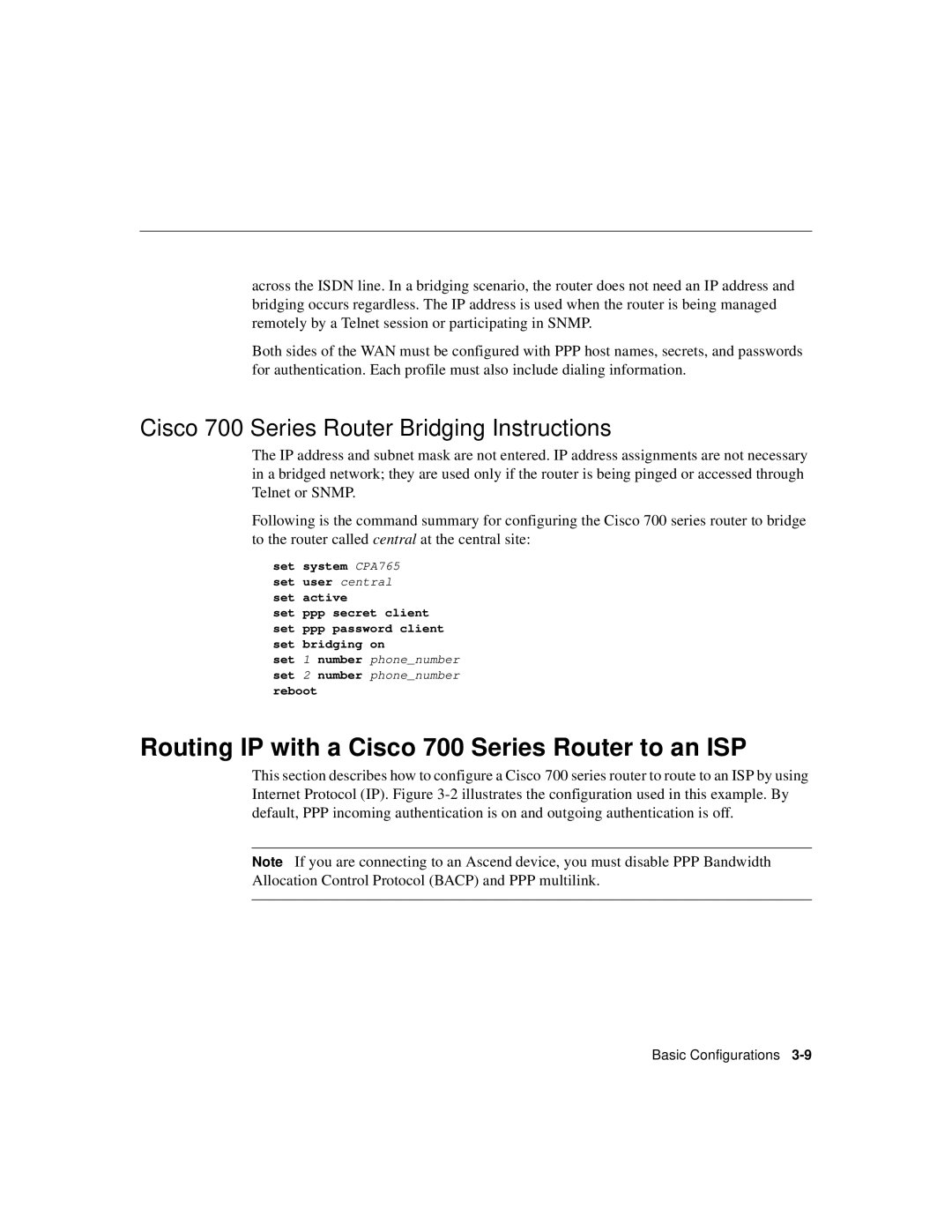
across the ISDN line. In a bridging scenario, the router does not need an IP address and bridging occurs regardless. The IP address is used when the router is being managed remotely by a Telnet session or participating in SNMP.
Both sides of the WAN must be configured with PPP host names, secrets, and passwords for authentication. Each profile must also include dialing information.
Cisco 700 Series Router Bridging Instructions
The IP address and subnet mask are not entered. IP address assignments are not necessary in a bridged network; they are used only if the router is being pinged or accessed through Telnet or SNMP.
Following is the command summary for configuring the Cisco 700 series router to bridge to the router called central at the central site:
set system CPA765 set user central set active
set ppp secret client set ppp password client set bridging on
set 1 number phone_number set 2 number phone_number reboot
Routing IP with a Cisco 700 Series Router to an ISP
This section describes how to configure a Cisco 700 series router to route to an ISP by using Internet Protocol (IP). Figure
Note If you are connecting to an Ascend device, you must disable PPP Bandwidth Allocation Control Protocol (BACP) and PPP multilink.
Basic Configurations
